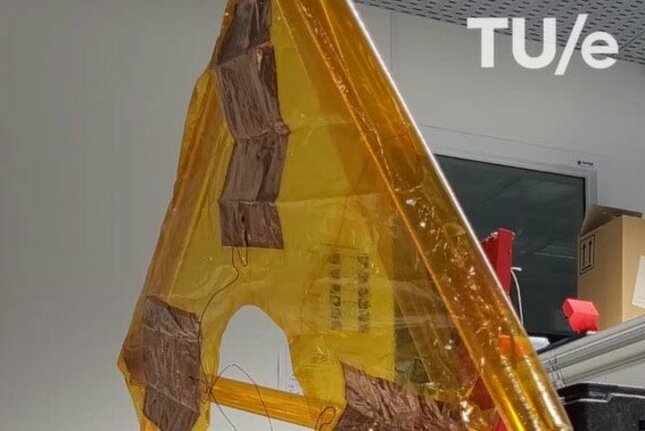Research into the Big Bang: an inflatable antenna in space
[VIDEO] The antenna can pick up very weak signals in space that are 14 billion years old.
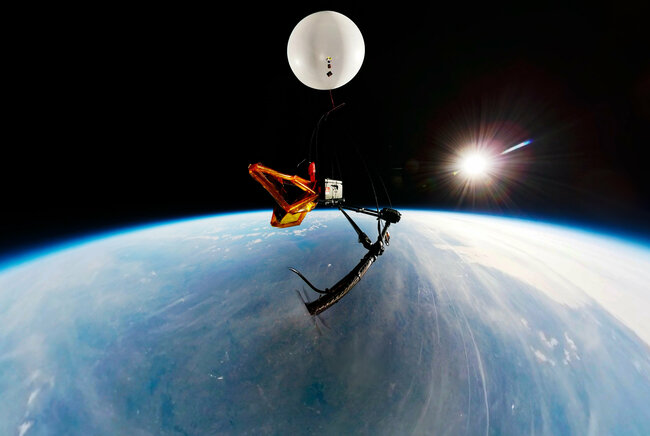
Niels Vertegaal, a doctoral candidate at TU Eindhoven, is developing an inflatable antenna to learn more about the Big Bang. The antenna can capture extremely faint signals in space that are 14 billion years old. The project was tested this week at an altitude of 30 kilometers.

The experiment
Wednesday, December 6th is the day. TU/e doctoral candidate Niels Vertegaal (29) has been in the English city of Sheffield for a few days, but today the weather conditions are good enough to send his inflatable radio telescope with a weather balloon to an altitude of about 30 kilometers in the stratosphere.
"He has departed," he messages from the testing grounds of the company Sent into Space in England. Now it's a waiting game to see if the experiment goes well.
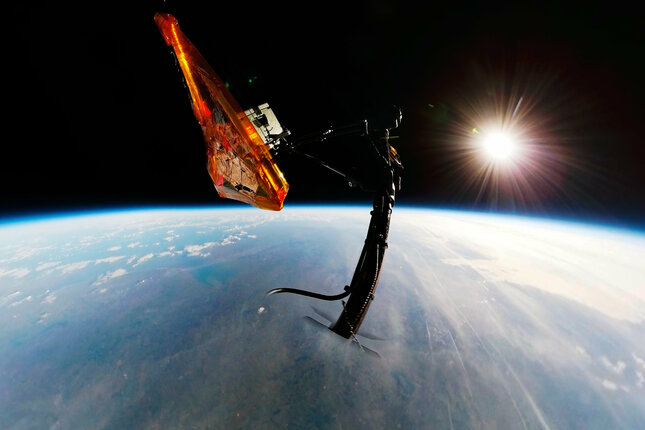
20 kilometer altitude
When the weather balloon reaches an altitude of 20 kilometers, the antenna begins to unfold. As it ascends beyond 30 kilometers into increasingly sparse air, the balloon will swell due to the growing pressure difference and eventually rupture.
If all goes well, Vertegaal should have gathered enough measurements in the short time beforehand to determine if the antenna is functioning properly. A parachute is meant to safely and without damage bring the equipment back to Earth. Vertegaal has tested the antenna in the Electrical Engineering lab several times, and it went well.
Every gram counts
"Every gram that goes into space is very precious," explained Vertegaal a week before departure. "So the question is how to make an antenna that is large in space but very small and light when launched."
Hence Vertegaal's idea to create an inflatable antenna. "In a vacuum, you only need a very small amount of air to inflate something." To test this, he took a prototype of the antenna to England, where a company specializes in conducting and guiding such experiments.
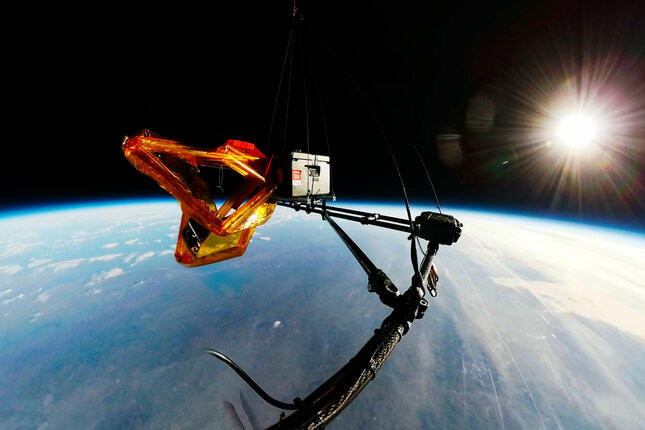
Small box
The antenna is packaged in a small cube measuring 10x10x10 centimeters (1 liter) during the 'launch'. Inside, there is an ultra-thin film that unfolds to a surface area of one square meter. The film has a conductive copper layer of 2 micrometers, which acts as a radio receiver.
The unfolding process involves inflating the arms of the antenna with a minimal amount of compressed air, followed by a small dose of CO2. In a video where Vertegaal tests the antenna in the electronic laboratory in the Flux building, it looks like inflating a balloon, gradually revealing the final form.
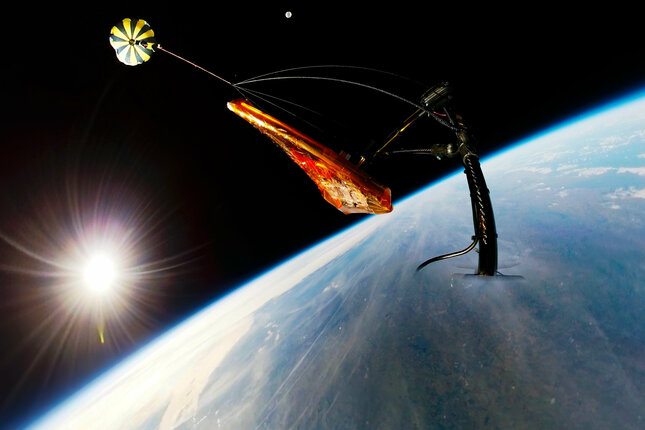
Satisfied
During the experiment, it turns out that the antenna unfolds completely, albeit later than Vertegaal had expected. "I still need to analyze the data, but I have already seen that the antenna has worked," he says a day after the test. "I am satisfied with how everything went."
Space exploration
With his experiment, Vertegaal aims to prove that the concept of an inflatable antenna works. "I really hope that after this, space missions to the moon will embrace this idea," he says.
Collaboration
There is a collaboration involving institutions such as Radboud University Nijmegen and TU/e to submit a proposal to the European Space Agency (ESA). The consortium's goal is to use an inflatable antenna as a radio telescope on the far side of the moon. "With an antenna positioned behind the moon, free from Earth's interference, capable of capturing ultra-low frequencies, we expect to gather information about the beginning of the universe," says Vertegaal.
This article was written in collaboration with Cursor.
Latest news


![[Translate to English:] [Translate to English:]](https://assets.w3.tue.nl/w/fileadmin/_processed_/e/0/csm_BvOF%202019_1031_BHF%20license%20TUe%20ILI%20copy_8a50884392.jpg)
